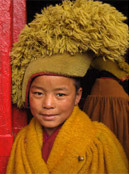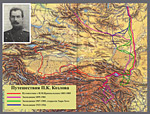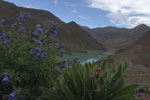Tsampa
- Whenever I prepare Tsampa, I think of Choe-la, a Tibetan nun who lived with our family and helped look after us children. Choe-la’s smiling face, as she grew older, filled with wrinkles, but she had always so many stories to share of her life. Each story she would tell with great laughter, and a twinkle in her eyes, glowing brighter as the story rose to a climax. She told happy stories of her life as a child in Tibet, in her teens travelling with a merchant caravan dressed as a boy riding astride a horse like a man, then as a young woman in exile, stranded with her master’s two children whom she raised by doing laundry in Kalimpong. She also told me stories of the hardships and heartache … of life in the early 60’s at Bod-so-khang (now TCV) when they barely had enough to feed every child, when they didn’t know how many would survive the night. She told me how she and others would go scavenging in the nearby hills for edible leafs and herbs to put in the children’s soup when otherwise there was nothing.
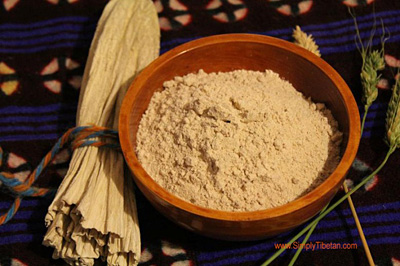
Choe-la used to make Tsampa for our family. The Tsampa production for our home and family members was something Choe-la really prided herself with and everyone loved it. It was a complicated and long production. My mother would get barley grown at high altitude from Manali or Ladakh. Once it arrived, Choe-la would get one or two helpers and they would start the washing process – which is tedious and time consuming. Then comes my favorite part, which is the roasting. The washed and dried barley is roasted in hot sand until the barley is cooked through – like popcorn, one can smell the roasted barley or “yoe” as we call it, from a distance and Choe-la would allow us kids to fill our pockets with fresh “yoe” to eat on the way to school. Next is the final step of grinding the roasted barley into Tsampa flour…
Choe-la always said, the best Tsampa comes from the “chu-tha” – water mill. My mother would hire a jeep for Choe-la to take the bags of roasted barley to the “chu-tha” in lower Dharamsala. I remember accompanying Choe-la once or twice … and I still remember how she was in her element once at the “chu-tha.” The local Indian mill owner and Choe-la were best pals even though they couldn’t understand a word of each other. They operated in a world of their own of smiles and gestures. Choe-la ran up and down, checking the tsampa as it came out of the mill, gesturing, complaining, waving her hands frantically until finally the Tsampa is the exact consistency that she wants, and then she smiles at her Indian friend. It is late evening by the time we bag all the Tsampa and head home but Choe-la is extremely pleased.
Once home, my mother being the generous lady that she is, will make bags of Tsampa for every relative and high lama in the vicinity of Dharamsala. I will never forget watching and helping Choela bag the Tsampa – some bags would be filled completely full for people that she approved of, while others would be rather dismally filled after a little grumble and my mother would gently reprimand her saying, “give and you shall receive” – my mother is one of the most giving of all people that I know.
Anyways, back to Tsampa …. living in the West, there is no Choe-la who will help make Tsampa for my family and we have to resort to making our own. My dear friend Dolkar la, kindly shared her Tsampa recipe and technique with Simply Tibetan and I happily post it here for you.

Tsampa – Recipe
Ingredient:
2-3 lb Hulled Barley (or any amount)
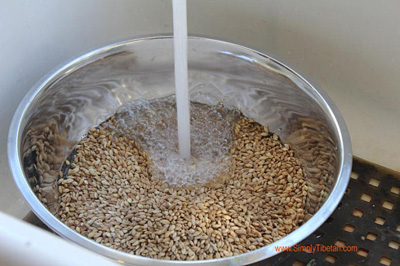
1. Put the barley in a large container and wash it under running tap water until completely clean – gently scrub to gent the loose hull off.
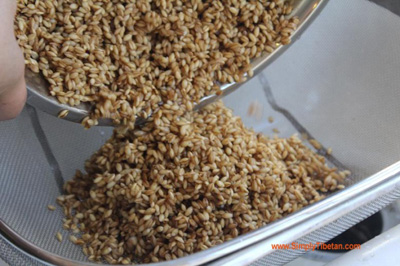
2. Put the washed barley in a strainer and let the water drip out.
3. 3. Fill a large pot with water and heat it until it is completely boiling.
4. Gently pour the hot water over the strainer with the barley until all the barley is washed with the hot boiling water. Immediately, cover with a clean cloth and let stand for about 15 minutes. The steam will slightly cook the barley and make it better for roasting.
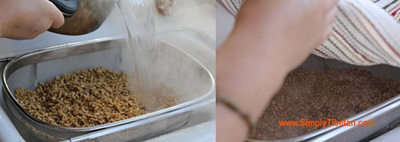
5. 5. Spread the barley out on a clean cloth and let dry slightly – 15 minutes.
6. 6. Heat a large wok or big pan – once its very hot, addd a portion of the washed, dried, barley and keep stirring, until all of the barley is roasted. (Its like making pop corn).
7. 7. Final step is the grinding. My friend used a flour grinder – so it was very easy and a must have if you make large quantities of tsampa. (But if you eat tsampa only occasionally, then you can also store the roasted barley or “yoe” in an air tight container and grind small quantities with a coffee grinder – this way you’ll have fresh tsampa when ever you want to eat it).
By:
simplytibetan.com
![]()
![]()
![]()
![]()
